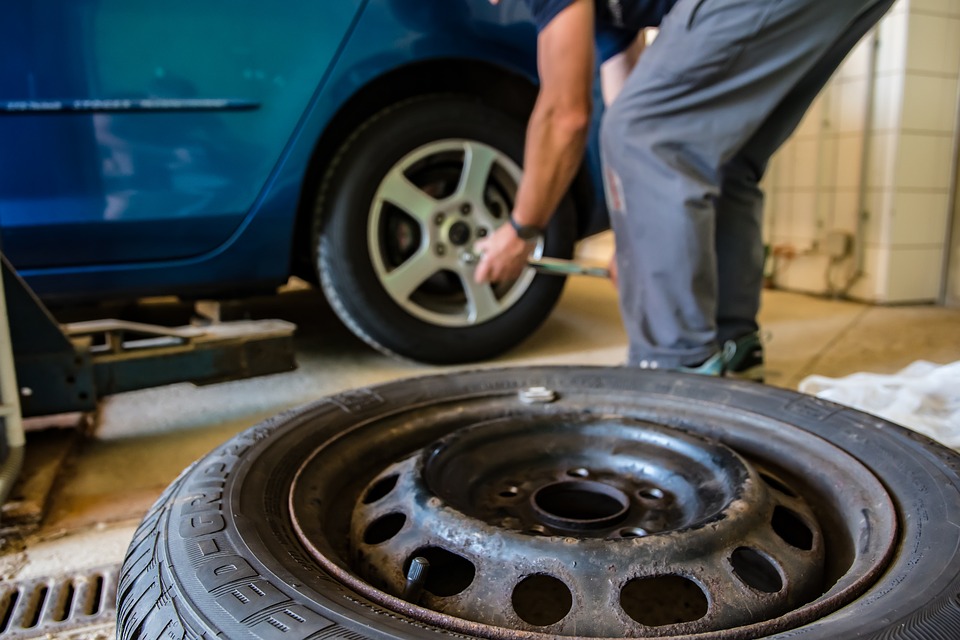Winter tyres are still mandatory until April 15, but if you don’t find yourself in winter driving conditions, you can change your tyres to summer tyres at any time. Or change them yourself if the stored tyres are still good. We explain what you need to keep in mind here.
It looks so simple, but you can do many things wrong when changing tyres, which can lead to problems, warns the expert organisation GTÜ. The correct torque and sequence are crucial. And under no circumstances should you spray Caramba, WD40 or something similar into the thread. But in detail:
Five steps to a successful wheel change
- Check: Once the winter wheels have been removed, you should check the summer wheels and the threads and drives of the wheel bolts or nuts for any damage. Does everything look good? Then, the fitting can begin.
A note beforehand: Never grease the threads of bolts or nuts to prevent corrosion. This is because the high temperatures generated during braking cause technical greases to burn and the threads to bake. The thread may only be protected if the car manufacturer authorises it and specifies suitable lubricants. On the other hand, careful cleaning of the thread and the contact surfaces between the hub and rim with a brush is always advisable.
- Mounting: The wheel is placed on the hub, and the connections are loosely bolted. This step feels best done by hand – with a socket spanner, ratchet, or wheel cross. Positioning and tightening the bolts perpendicular to the thread axis is essential. If they can be screwed in smoothly, they are not tilted. The screw shafts, which are often hemispherical or conical, help with centring. The jack can be lowered if the wheel is correctly seated on the hub.
- Sequence: This is followed by the safety-relevant, final tightening of the screw connections. This should be carried out in a specific sequence and to the torque specified by the manufacturer. For hubs with four screw connections, proceed crosswise (for example, 1-3-2-4). If there are five or six screw connections, replace them in a star pattern. This procedure is essential as it presses the rim evenly flush onto the hub.
- Torque: To maintain the torque specified by the manufacturer in Newton metres (Nm), the screw connections must be neither too loose nor too tight. A torque spanner with the appropriate setting range is the right tool.
The Nm specification can be found in the vehicle documents or, in the case of retrofit rims, in the corresponding expert opinion. The value is very often 110 or 120 Nm. The most convenient way to tighten is with a torque spanner: It is set to the desired value or is set to this value at the factory. When the limit value is reached during tightening, it turns with an audible click.
- Check: High dynamic forces act on wheel bolts while driving. This is why it is often recommended to check the friction-locked connection shortly after changing the wheel. The check is carried out around 100 kilometres after the wheel change by tightening all screw connections again with the torque spanner. Again, work crosswise.
Basically, the rim mounting on the hub differs in the arrangement of the threaded bolts: For wheels with wheel nuts, there are stud bolts on the hub. The rim can be positioned easily by sliding it over the fixed studs. The nuts are then screwed on. Wheel bolts, on the other hand, come with the threaded bolt and are screwed into the internal thread of the hub. This makes fitting a little trickier. On the other hand, a larger number of rims can be approved for a car because different lengths of bolts can be used.
There are also differences in the fasteners’ drive type and size. Hexagon nuts for spanner widths of 17, 19, and 21 millimetres are widely used. Screws are available with external and internal hexagons or multi-tooth profiles. There are also unique anti-theft versions. Sounds complicated, but it is actually quite simple if you select the appropriate fasteners when purchasing your wheels.
- source: krone.at/picture: pixabay.com
This post has already been read 5280 times!



